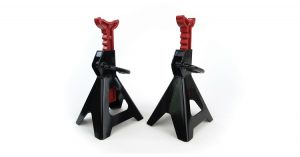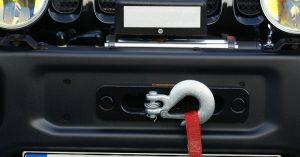If you have bought your first VW vehicle or turbocharged Audi, you might be wondering how a blow-off valve differs from a diverter valve and which one you should buy to upgrade your automobile.
A blow-off valve and a diverter valve are two different pieces of items. Each has its own advantages and disadvantages depending on which vehicle they are installed in.
We will look at the differences between these valves in order to help you understand which one would work better for your car.
Table of Contents
How They Work
Every time you press the gas pedal on your turbocharged car, air enters the engine since the throttle cover opens up. That air is compressed and driven into your car engine by the turbo.
If you change, you release the throttle. This shuts the plate cover but the turbo continues to rotate. By continuing to rotate, the turbo won’t have much to do when you need it again, but the air that was compressed needs to go somewhere.
1. The Diverter Valve

The diverter valve takes that air and recycles it via the intake stream. If this valve doesn’t diverter that air, the air will make the turbo to begin spinning backward as the air get sucked back into the system.
When your car is tuned to reprocess the air by the Mass Air Flow (MAF) sensor, the MAF sensor will compute how much air will be left when the throttle reopens again.
2. The Blow-Off Valve

The blow-off valve will only take the excess air and release it into space. This will make your car’s computer to provide fuel based on the air already present in the system and any other new intake.
This valve has a cool “pfftt” sound and its outcome is a better running engine.
Note: You can easily see the difference between the two valves come in where they deliver the air. The diverter valve recycles the air while the blow-off valve releases the excess air to the atmosphere.
Installing Diverter and Blow-off Valves
As you will notice, the installation process of a diverter valve is different from that of a blow-off valve. So, how do you go about it as a DIY person? Let’s me give you the steps involved to help you spot the differences.
1. The Diverter Valve
It is very easy to install a diverter valve if you follow the steps that I have listed below.
Step 1: Place the front of your car on a jackstand and remove the undercover under the engine. You will see the diverter valve on the passenger side – in the section between the lower spoiler and the passenger front tire, near the passenger side of the Air Conditioner (AC) compressor.
Step 2: Cut the single use crimp clamp with container snip.
Step 3: Unscrew the clamp with a screwdriver, mostly flat head.
Step 4: Remove the vacuum line from the upper part of the valve and then remove the diverter valve from your car.
Step 5: Installing a new diverter valve is basically the reverse of the removal process.
Also, use the enclose clamps to fix vacuum and hoses line and the enclosed ziptie to fasten vacuum hose to the boost hose in order to keep it away from moving parts.
2. The Blow-off Valve
The blow-off valve installation process is also an easy process. However, it will depend on the type of your car. Note that when you install a blow-off valve you increase your car’s engine performance while extending its useful life.
Below are the steps that I follow when installing a blow-off valve for my car.
Step 1: Disconnect and remove your battery before you start to install your blow-off valve. Although you can easily accomplish this task without removing the battery, I would recommend you to always disconnect your battery when working near the engine (do the same while installing the diverter valve). This is to guarantee you safety.
Step 2: Place your front part of the car in the right position (follow the first step of installing a diverter valve).
Step 3: Install the blow-off valve to a mounting flange (which is sold separately) using the right hardware and gasket.
Step 4: Attach the vacuum tip to the top covering to the intake manifold pressure source.
Now the only thing left is to adjust your blow-off valve and you will be good to go.
Note: The installation process of a diverter valve is almost the same as that of a blow-off valve. But they differ in where they are located. It is also much easier to install a blow-off valve than a diverter valve.

Different Types of Diverter and Blow-off Valves
Basically, there are two types of diverter valves and two types of blow-off valves.
1. The Diverter Valve
As I have mentioned above, there are two major kinds of diverter valves: the wye line diverter and the liquid line diverter. Both types change the flow from a single line into two outlet lines.
Wye Line Diverter- It features a hinged disc at the center that shuts either of the two outlets. This kind of diverter is ideal for handling dry heavy materials in pressure pneumatic conveying systems or dilute phase vacuum.
Liquid Line Diverter- This model is mainly used for all liquid services. As opposed to using moving elements (like the disc), its flow stream is changed by pneumatic pressure differences.
2. The Blow-off Valve
There are also two main kinds of blow-off valves: the recirculating type and the atmospheric type.
Atmospheric Type- This valve vents the air into the air while producing a hissing or whooshing sound.
Recirculating Type- This type releases the excess air into the intake system, just before the turbo bay. It is silent, meaning that it won’t produce any sound.
Note that there is a third type of blow-off valve that combines the features of the recirculating and atmospheric type. This is commonly known as the dual-port blow-off valve. If you have this model, you can easily switch between recirculation, atmospheric, or both functions at a go.
When choosing the right blow-off valve for your car, you should ensure that you get a model that can handle the pressure produced by the turbocharger. For instance, if your car has a mildly-tuned turbo engine, then a 15 psi blow-off valve will be fine.
However, if you will be running a bigger T4 or T5, then you should go for a bigger blow-off valve than can withstand the higher pressure. You should avoid getting a product that will break down after the first use.
Parts of Diverter and Blow-off Valves
Understanding the different parts of the diverter and blow-off valves will help you understand their difference better and even be in a position to diagnose future problems that might occur due to continued usage of the valves.
1. The Diverter Valve

The major parts of a diverter valve include:
Body – Diverter valves often come in a spherical shape. There are other shapes but that is the standard one. Also, the body features partitions that support the bottom, an essential part of the valve.
Bonnet – This is the cover of the diverter valve’s orifice. You should be careful with the kind of bonnet you purchase since they often cause leaks.
Seat – The seat is one of the parts of the valve that comprises the trim. Also called a seal ring, the seat holds the disc in the right place.
Disc – The disc gives shape to the diverter valve. It enables the deprive fluid to flow.
Stem – It connects the disc and the actuator. Hence, it determines the position of your disc and allows the spinning of the disc.
Actuator – It runs the disc a well as the assembly elements. It can be operated by motors, levers, manually, or pneumatically.
Packing – This part protects your diverter valve from damage. It houses the internal elements of the valve.
2. The Blow-Off Valve

Blow-off valves are made up of four parts: springs, a vacuum connection point, inlet port, and outlet port. These parts are made of high-quality aluminum material and come with elements like bolts, gaskets, and flanges.
You can also choose whether you want a red, purple, or silver-colored valve. Also, note that new blow-off valves can come with less or additional parts, it will depend on the kind of valve you want.
Furthermore, note that most of the parts found in the diverter valve will also be found in the blow-off valve. However, the two valves differ in most parts and what they are meant to do, and how they are designed.
Conclusion
The simplest way to solve the mystery of the diverter valve vs blow-off valve is to know their purposes. The blow-off valve has two main purposes: to prevent your car engine from wearing out fast and to prevent any compressed air surges. It achieves these purposes by releasing the excess air into the atmosphere. The diverter valve takes the air and recycles it through the intake system.
When searching for an aftermarket upgrade of your car’s valve, you can settle for a diverter valve or go for a combined blow-off and diverter valve. Your choice will be determined by your outcome aim and if you wish to change your car’s factory design.



